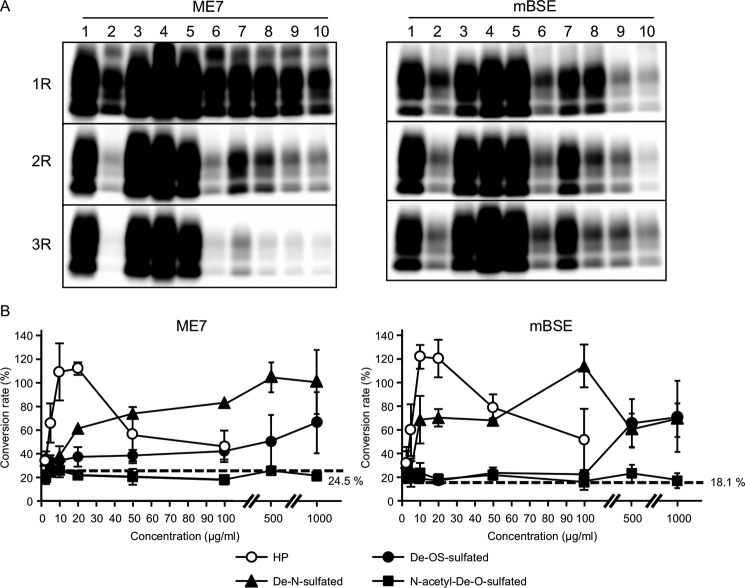FIGURE 3.
Recovery effects of various HP derivatives on Bac-PrPres amplification under nucleic acid-depleted conditions. A, three rounds of ME7- and mBSE-seeded iPMCA were performed, under conditions of nucleic acid depletion, in the presence of HP and various HP derivatives: normal HP (HP, 17–18 kDa; lane 4), low molecular mass HP (<3 kDa; lane 5), disaccharided HP (0.7 kDa; lane 6), de-N-sulfated HP (lane 7), de-O-sulfated HP (lane 8), N-acetyl-de-O-sulfated HP (lane 9), and heparinase II-treated normal HP (lane 10). Lanes 1–3, non-treated sample, benzonase-treated sample, and benzonase-treated sample with added PA, respectively. All additives were used at a final concentration of 10 μg/ml. B, one round of ME7- and mBSE-seeded iPMCA performed using benzonase-treated PHCL; the amplification was conducted with various concentrations of normal HP (open circles), de-N-sulfated HP (closed triangles), de-O-sulfated HP (closed circles), and N-acetyl-de-O-sulfated HP (closed squares) (2.5–1000 μg/ml). The experiments were repeated at least three times. The conversion efficiencies for each sample are expressed as a percentage change (mean ± S.D. (error bars)) relative to the control value (control = 100). The conversion value of PMCA performed using non-treated PHCL served as a control. The conversion rates measured with the use of N-acetyl-de-O-sulfated HP were almost equivalent to those of PMCA performed with no addition of HPs under nucleic acid-depleted conditions (dotted line, 24.5% for ME7 and 18.1% for mBSE).

